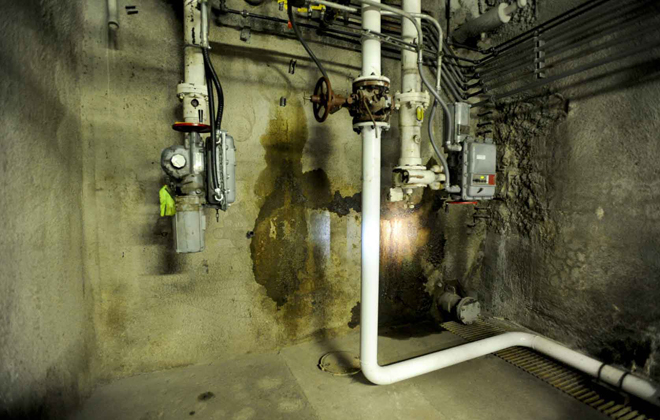State and city agencies want the Navy to either double-line its operational underground fuel storage tanks at Red Hill within the next 10 years or shut them down, according to a draft report issued last week by the Red Hill Fuel Storage Facility Task Force.
"Ultimately, the storage of up to 187 million gallons of fuel, 100 feet above a drinking water resource, is inherently dangerous to the environment," the draft report states.
Hawaii-based Navy officials serving on the task force expressed frustration over the draft report, which is slated to be submitted to the Legislature in December.
Tom Clements, environmental public affairs officer for Navy Region Hawaii Public Affairs, said the draft was not shared with the Navy before it went public and that it "misrepresented the Navy’s position on several key points." Clements did not specify the Navy’s concerns in an email response to a request for comment by the Honolulu Star-Advertiser.
The task force was formed by the state Legislature following the January leak of an estimated 27,000 gallons of jet fuel from one of 20 World War II-era tanks at Red Hill.
State health and city water officials have raised concerns about the potential for a leak to seep through concrete, permeate bedrock and contaminate groundwater. Tests to date, however, have shown no harmful levels of contamination in groundwater.
While task force talks have been contentious, both Clements and Gary Gill, state deputy health director for environmental health, said they expect all involved agencies and organizations will help hash out a final report that incorporates the views of the Navy and Environmental Protection Adminstration.
The draft report states that the Red Hill facility "should only exist on the condition that aging facility be upgraded with secondary containment and state-of-the-art leak detection to ensure safe operations and (no) adverse impact to the environment," and such improvements should be in place by Dec. 31, 2024.
Gill told the Star-Advertiser after Thursday’s task force meeting that while Navy officials did not submit recommendations in time to be included in the draft, they had previously stated publicly that they agree the tanks should be given a second lining.
He noted that the Navy "has not yet recovered one drop of fuel" from the January 2013 leak.
"Recovering the spilled product is still an issue for us," Gill said. "We know that these tanks have been leaking for 70 years, and we know that there is contamination in the groundwater directly below them, but we don’t know exactly how much contamination there is and in what direction it may be flowing toward any drinking water wells."
Clements, in his email, noted that the Navy has installed two new groundwater monitoring wells north of the storage facility. Both wells will allow the Navy to "apply suitable engineering practices in coordination with regulators and others to determine possible future groundwater well sitings."
Aliamanu/Salt Lake/Foster Village Neighborhood Board Chairman David Yomes, also a task force member, said he’s satisfied with the Navy’s assurances to the community that it’s taking preventive measures to ensure public safety. "However, there still should be continuous monitoring and reporting by the Navy," he said.

